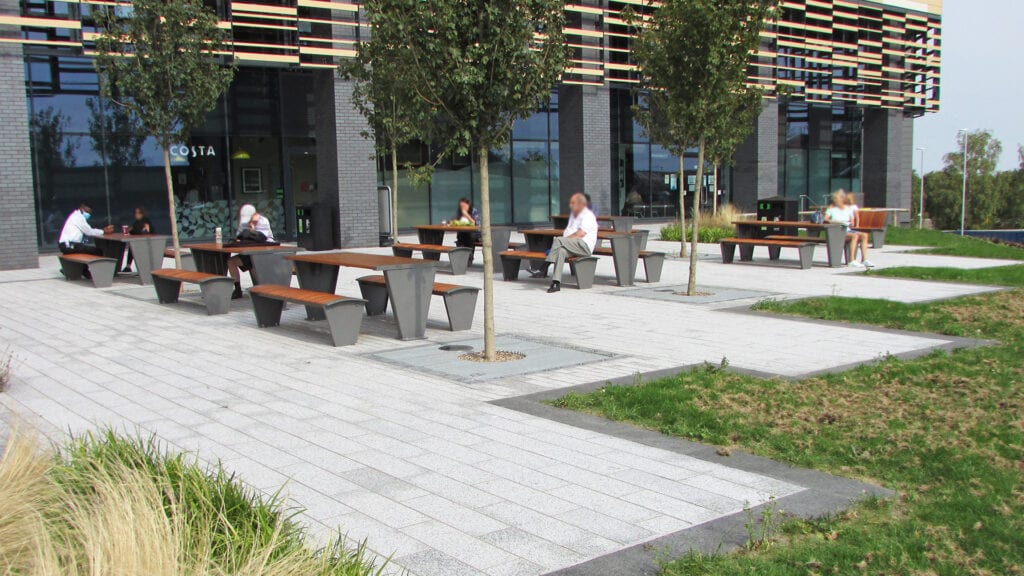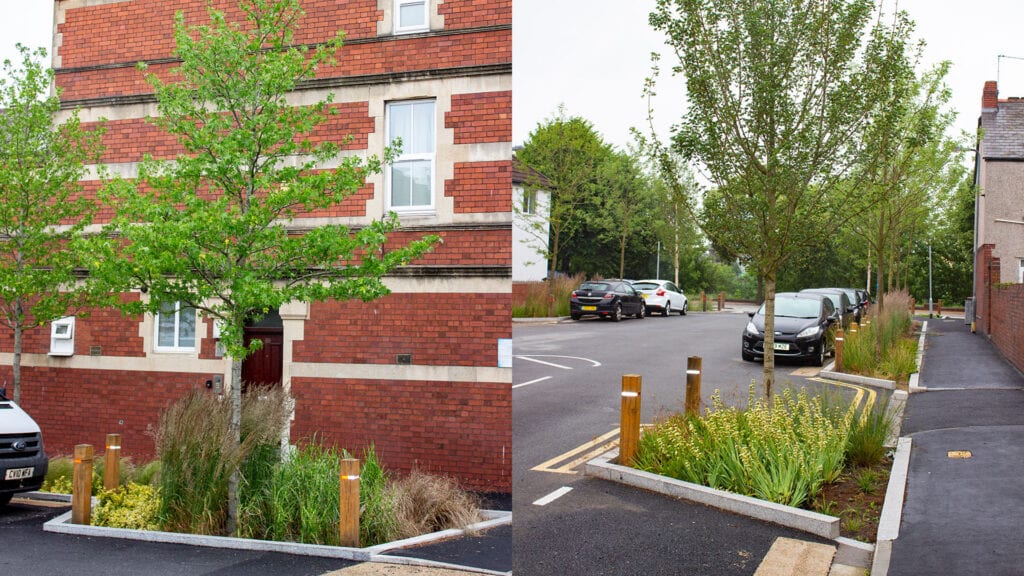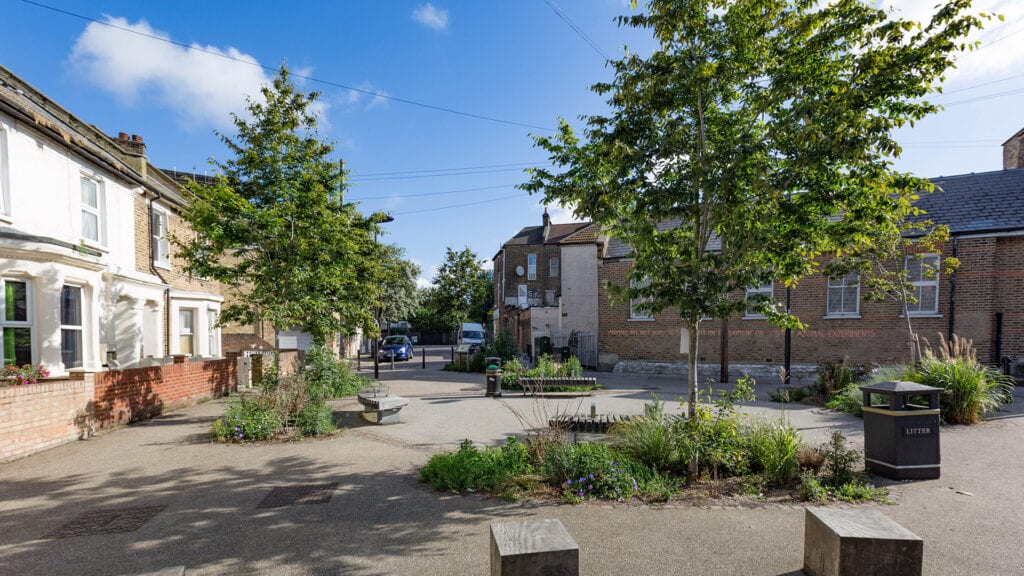On paper, the idea of sustainable drainage (SuDS) has so much going for it for developers. It helps meet the challenges of increasing levels of stormwater runoff in an attractive, environmentally friendly way. It also allows developers to optimise land use and create environments that people want to live and work in.
So, what’s holding some developers back from including SuDS in their schemes? For a long time, the primary barrier has maintenance. Who is going to look after sustainable drainage features in development: the water company; local authority; home-owners; the developers themselves?

There have been many discussions about this topic over the years, which all seem to feature a variation on: ‘it all depends on the type of structure we’re talking about’.
The issue of maintenance for traditional drainage is pretty clear cut. The responsibility lies mainly with water companies, highways and/or local authorities. Since the introduction of the Flood Water Management Act (FWMA) in 2010 encouraging SuDS, their adoption and maintenance have been a bit of a sticking point. They have different maintenance requirements from traditional drainage. Water companies like and understand pipes and tanks. Rain gardens, swales and tree pits, etc. present very different challenges.
Two major advances over the last couple of years have gone some way to address the issues. In January 2019, SuDS became a legal requirement in Wales for developments of a certain size. In April 2020, the Design and Construction Guidance (DCG) came into effect in England, setting the criteria for water companies and sewerage undertakers to adopt SuDS. Its guidance “… provides the mechanism by which sewerage companies can secure the adoption of a wide range of SuDS components that are compliant with the legal definition of a sewer.” Once again, the ‘it all depends’ caveat.

The DCG does set out four criteria for a SuDS component to be adopted by a water company or sewerage undertaker:
• It has to be constructed to drain buildings and yards belonging or pertinent to buildings and it must serve more than one property
• It must have a channel, so is basically a depression between banks or ridges or a defined boundary of some description
• It must convey and return flow to a sewer or the environment – either a surface water body or groundwater
• And it must have an effective and lawful outfall or point of discharge. It is very important that there is lawful authority to discharge back into the environment.
So, is a rain garden or tree pit adoptable? In some cases, the answer is yes (but it all depends, etc…). Tree pits that form part of a bioretention system are adaptable, specially engineered systems with engineered soil (gravel and sand layers) that increase infiltration. Tree pit systems like ArborFlow can help developer’s schemes meet the criteria for adoption. But should we really be looking at legislation to enforce ‘adoptability’?
What about taking responsibility at an individual level – for our own homes’ contribution to the problem of surface water? At GreenBlue Urban, we’re championing the idea of MicroSuDS – planters, rain gardens, individual tree pits – that can make a massive contribution to ‘slowing the flow’ of surface water by intercepting it close to the source. A few years ago, there was a media outcry in the UK about the paving over of front gardens for parking. Far less noise was made about the plethora of patios creating impervious surfaces in back gardens. But the effect is the same.
Why aren’t people taking responsibility to offset the permeable surface area their homes reduce?
And don’t get us started on artificial lawns!
It is a serious question to raise. We can of course reasonably expect water companies, highways agencies and local authorities, etc. to help protect our communities from flooding, but we are all part of those communities and should step up to the mark ourselves, at an individual, household and neighbourhood level to manage surface water earlier before it becomes ‘someone else’s problem’. This does call for a change of mindset, a shift on how we think about water. That new patio could be permeable and sit above a water storage tank, providing water for the garden. Same for parking areas within new housing and business developments.

Of course, developers have a moral and legal responsibility to protect their developments from flooding. Often the main driver is financial, the need to avoid costly insurance claims from flooding. What we are advocating is a change in attitude to managing surface water from the individual up to the corporate level. Corporations need to start living up to their CSR promises and actively pursuing ways to alleviate flood risk and make a tangible difference to the environment.
The knock-on effects of developing better, healthier, more attractive places to live and work. Resulting in greater benefits to people, wildlife and local ecology and will be a lasting legacy for those brave and committed enough to change their mindsets and embrace a new way of thinking. We say: don’t wait for legislation to tell you what you have to do, lead the charge and do what you must do to improve the world.
At GreenBlue Urban, we commit every single day to help landscape architects, civil engineers and developers in the successful design and implementation of green and blue infrastructure. Our products facilitate beneficial ecosystems by enabling trees planted in hardscape areas to reach their full potential. Our engineered tree pit systems and bioretention rain garden systems are used worldwide as SuDS/LID systems for water filtration and attenuation.
You can read about how we make this happen in our numerous case studies. Why we make it happen is our strength and our purpose. Join us in our mission.

